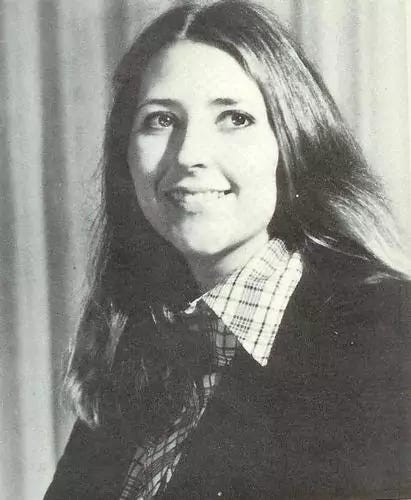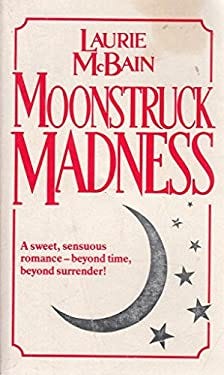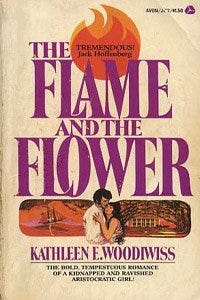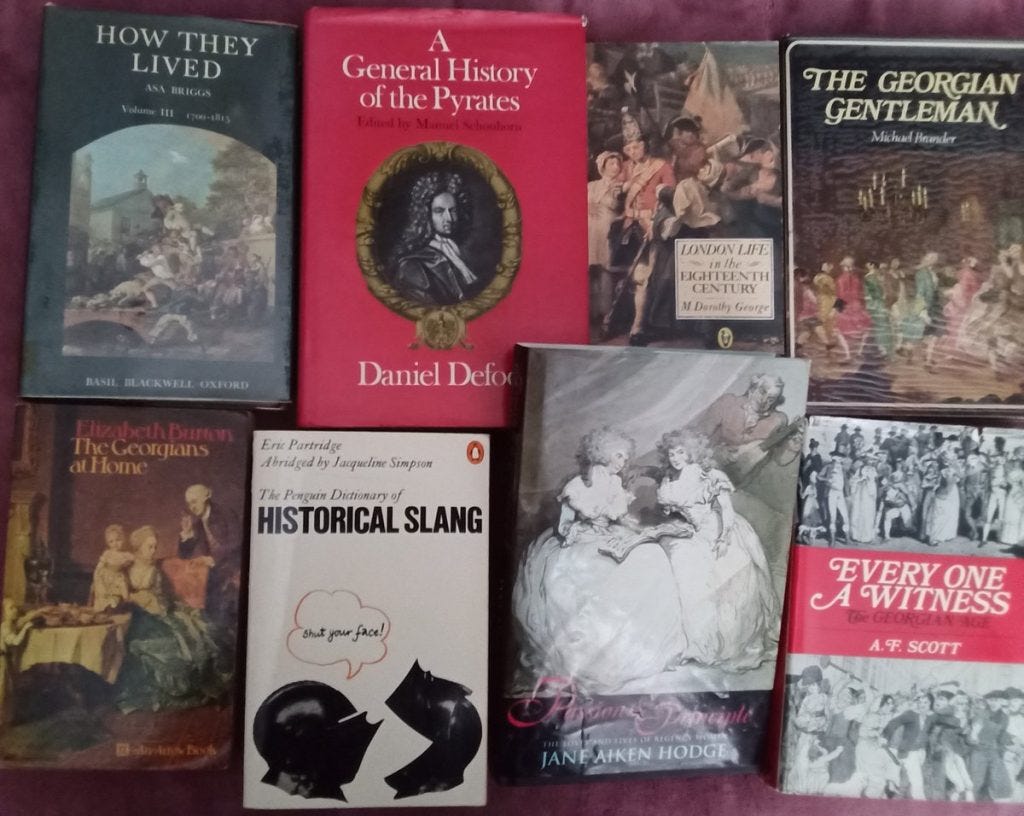Laurie McBain
This post is dedicated to Laurie McBain, who instilled in me a love of historical fiction and helped populate my bookshelves with non-fiction history books.
Young adult fiction wasn’t really a thing when I was at school so, being a precocious reader, I moved to adult fiction around the age of twelve or thirteen. Early on I was reading horror from James Herbert and some mainstream bestsellers. As the years passed, I would continue to scan the bookshelves of the town’s old bookshop, a place with a narrow passage and a rickety twisting staircase to the next floor. I also browsed newsagent shelves and the local library.
There were books that caught my attention like Robert Heinlein’s science-fiction novels Stranger in a Strange Land and Friday, Stephen Donaldson’s books, and other titles that I filed away for future reference. I still haven’t read the Heinlein books. I suppose this is where I should put them on my 2024 reading list.
But one book that caught my attention was a silvery reflective cover with a crescent moon, and the title Moonstruck Madness. Taking it off the shelf and scanning the back, I saw that it was about a highwaywoman.
In fact, it was a historical romance set in the eighteenth century.
But a woman passing herself off as male to rob people on the open road caught my attention most. I’d likely already seen The Wicked Lady with Margaret Lockwood and James Mason.
So I spent part of my pocket money that week on Moonstruck Madness and took it home. I must have been about fifteen or sixteen by this point.
When it comes to modern historical romance, there are a few standout names from the 1970s. The first is Kathleen Woodiwiss. Then came Rosemary Rogers, a writer whose books I never really got on with, and others, including my then favourite, Laurie McBain. Published by Avon, they were the Avon Ladies. And they sold millions.
After a few years, I moved on from the genre. I’d always read other genres as well as literary fiction. But I retained a fond memory of some of those historical romances, particularly the one that led to my bookshelves filling up with non-fiction on the eighteenth century. I have continued to enjoy historical fiction and have developmentally edited a few historical books, including historical romance.
Woodiwiss passed away some years ago and McBain mysteriously appeared to stop writing after her seventh novel. Her Wikipedia entry says that she retired from writing or publishing after the death of her father. But this is not true. At least, she didn’t stop writing then. Both authors were huge bestselling authors in their day and this post briefly revisits their contributions to the genre.
While I wanted to focus on McBain, it’s impossible to look at her success without examining her predecessor first. Especially since McBain herself credited Woodiwiss and her first novel, The Flame and the Flower, as her inspiration:
I can still remember so very vividly standing in front of several rows of books and trying to find something to read, but nothing interested me until I caught sight of a big historical novel with a startlingly white cover and bright purple lettering, and by an author I’d never read. Intrigued by the story, I bought the book, little realizing the impact it would have on my own life.
(McBain, Romantic Times, 1988)
Kathleen Woodiwiss: The First Avon Lady
Kathleen Woodiwiss wrote her first novel while living at an air force base in Kansas. This Regency novel, The Flame and the Flower, launched the modern racy historical romance. At 600 pages, the manuscript was not what either agents or hardback publishers were looking for at the time.
Indeed, an agent advised Woodiwiss to rewrite the novel, cutting it down to one fourth of its current length. The agent also told her to add ‘grabbers’ at the end of each chapter to propel the reader on to the next, to add more sex, and to double space the manuscript since single spacing was not acceptable.
She only took the last suggestion and retyped the novel. Then, hearing that hardback publishers took too big a percentage of the royalties, she decided to go with paperback publishers instead.
And the reason she ended up at Avon? She looked up the list of publishers at the back of Writer’s Digest, starting with the A-names. Avon wasn’t the first option, but it was the publisher who asked for longer manuscripts.
At Avon the manuscript fell into the slush pile where it was found by editor Nancy Coffey. Coffey had intended to go swimming at the beach that weekend. But the weather forecast was rain. Forced to spend the weekend indoors, she pulled the huge manuscript from the pile. Soon she couldn’t put it down. She was up all night finishing it and by Monday morning she was recommending that Avon publish the book.
Avon would release the book in paperback as an ‘Avon Spectacular’ with the kind of promotion usually reserved for bestseller reprints.
Woodiwiss received $1500 for the rights and 4% of the royalties.
To get an idea of just how much faith editor Nancy Coffey and Avon had in this novel – the first print run for The Flame and The Flower was for half a million books. The actual print run was 600,000 after a good review from Publisher’s Weekly. It was a gamble since the book was different – epic in scope, long, with much steamier sex scenes. Yet the gamble paid off. A popular new subgenre was born. And The Flame and the Flower sold just short of two and a half million copies in its first four years.
Woodiwiss credited word of mouth by readers for contributing to the book’s success.
In a groundbreaking move, Avon published the novel in paperback first, not hardback. From its initial publication in April 1972, the book had gone through 40 reprints by 1978 and by then had sold 4.5 million copies. In spite of having what today is clearly problematic content including rape, the book is still in print now.
When Rosemary Rogers’ Sweet Savage Love landed at Avon, addressed ‘To the Editor of The Flame and The Flower‘, Coffey told the next editorial meeting, ‘I hate to tell you, but I think we’ve got another one’.
By the time The Flame and the Flower had gone through 40 reprints, Sweet Savage Love had gone through 32. Avon was the first publisher of choice for historical romance writers – many of them starting off as inspired readers – and the company received around 500 fan letters a week.
Meanwhile, not all the authors were who they seemed to be. Jennifer Wilde was a popular historical romance writer and one of the ‘Avon Ladies’.
In an issue of New York Magazine from February 13th 1978, there is a list of bestsellers. Rosemary Rogers took the top three positions, followed by Kathleen Woodiwiss at number four, six and seven. Jennifer Wilde is at number four with 2.5 million copies of Love’s Tender Fury sold. Wilde’s Dare to Love meanwhile appears lower down at 1.3 million.
Jennifer Wilde was actually Tom Huff, a six-foot tall Texan guy. He wrote romance under a number of pseudonyms. When he moved to historical romance, he adopted the name Jennifer Wilde. Immensely successful, he won a Romantic Times career achievement award but sadly died of a heart attack in 1990.
The timing of this wave of historical romances coincided with the women’s rights movement. Female sexuality was a more acceptable topic of conversation. Nevertheless there was a tension or conflict between feminism and some of the subjects covered in the historical romance novels of the 1970s and 1980s.
But the new and epic historical romance was popular. So it was inevitable that Nancy Coffey and Avon would be scouring for new authors in the same new genre. Soon writers like Laurie McBain and Rosemary Rogers followed.
Laurie McBain joins Avon
Born in 1949, California-born Laurie McBain was a graduate of California State University.
She’d already read The Flame and The Flower when she saw a notice in Writer’s Digest from Avon looking for unagented writers. Encouraged by her father, she researched and wrote her own Regency romance Devil’s Desire.
Not only was my writing style influenced by Kathleen Woodiwiss (as well as by the novels of Daphne du Maurier, Georgette Heyer, and Mary Stewart), but because of The Flame and The Flower, when I completed my first historical novel, Devil’s Desire, I sent it to the publishers of Kathleen Woodiwiss.
Laurie McBain, Romantic Times
McBain wrote Devil’s Desire after months of research. She was 26 when her first novel was published. The first run was over half a million copies.
Many years later, in a letter she wrote for the Romantic Times, she said she still had the Special Delivery letter she’d received from Nancy Coffey, confirming Avon’s interest in acquiring her book.
…from that moment my life was changed forever.
Laurie McBain Romantic Times
There were only minimal changes suggested and Coffey would become McBain’s editor.
Fascinated by history, McBain admitted to feeling very privileged to land a career in historical fiction.
Moonstruck Madness
There is a note inside Laurie McBain’s novels that says:
Laurie McBain is of Scottish descent and members of the McBain Clan were killed at the battle of Culloden Moor in 1746.
This link to Scotland and Culloden is particularly relevant to her second novel, Moonstruck Madness. It was the tale of a young impoverished half-Scottish aristocrat, Sabrina Verrick. By day she’s a young lady of a declining manor. By night she’s Bonnie Charlie, a highwayman, who robs the rich, including Lucien Dominick, a duke and the book’s hero.
For Moonstruck Madness, McBain’s research into the post-Culloden period in England shows a good grip of the period language without overdoing it. From the opening pages, when a group of male aristocrats are about to be interrupted at dinner by the mysterious Bonnie Charlie and ‘his’ accomplices, McBain quickly sketches in period and character.
It’s easy to picture these men sitting around in their powdered wigs, only to be spluttering in outrage at the mysterious figure who emerges from behind the curtains. Lucien, the book’s scarred hero, is present and he and Bonnie Charlie clash from the first scene.
Lucien has no idea at this point that she’s a woman. In fact, Sabrina took to the road to support her siblings and aunt. Forced to leave Scotland after the defeat at Culloden, she harbours some enmity towards the English.
Lucien is determined to catch up with the cheeky highwayman who robbed them all. But he also has his own problems with the expectation that he should marry or lose his estate. A pair of siblings provide the antagonistic forces along with the dowager duchess who won’t tolerate Lucien staying single. He must marry or else the estate passes to a cousin – the male half of the siblings.
Meanwhile Sabrina’s estranged father lurks in the background, ready to reappear, which only adds to her problems. Every night on the road she risks discovery. Every night she goes out as Bonnie Charlie she might never return, or be caught and hanged.
Given that this is a historical romance, it’s not too hard to guess whether this book has a happy ending. And given it was published in 1975, it perhaps won’t fit entirely with modern sensibilities. However, it was a rip-roaring success, selling over a million copies, and was the first of the Dominick trilogy.
McBain also wrote other historical novels including Tears of Gold and Wild Bells to The Wild Sky. In Tears of Gold she mined the history of her native state of California, San Francisco, and the Gold Rush period (which ran from 1848 to 1855). Wild Bells covers a longer period of time and includes privateers, castaways, gypsies, Elizabethan England, spies, treason and treachery.
Her final novel was When The Spendor Falls, a sweeping story set against the backdrop of the American Civil War and the devastating impact on two families. It was published in 1985. Two other previous novels continued the story of the Dominick family into the next generation.
And then it was over…
But then, seven bestselling books in, it was over. Laurie McBain vanished from the publishing industry.
Common mythology (and Wikipedia) says she retired after her father died. He had helped and encouraged her from the time of her first novel, Devil’s Desire.
However, this is not true.
Old cuttings posted by Rob Imes on the internet, including Twitter/X, show that she was working on another book, set in medieval England. One cutting mentions a reader receiving a letter from Laurie McBain saying the book was complete and delivered to Bantam. Though it didn’t yet have a title, the likely publication date was either 1992 or 1993. I contacted her former editor who confirmed she was Laurie McBain’s editor at Bantam. She was unable to tell me anything else.
There was a later reference in the Romantic Times to a novel that McBain was finishing – this was in 1995. It’s not clear if it’s the same one or a ninth novel.
Where is the eighth novel?!
So, what happened to the eighth novel? And is there a ninth? For such a successful author to suddenly disappear is odd. But there were changes in the industry in the 1990s. My next author post will likely be about SF/F/H author Tanith Lee. Lee found it increasingly difficult in the 1990s to get her manuscripts or pitches accepted by publishers she’d worked with in the past.
I think Laurie McBain’s fans would dearly love to see the eighth novel. The idea that it’s out there, never to see the light, just doesn’t seem right.
Her career lasted from 1975 to 1985. At the time of this post Laurie McBain will be around 74 years old. It’s difficult to think of a writer coming to prominence in her field in her mid-twenties only to exit in her mid-thirties, when her fans were still eager to read her work.
And since her other novels are almost entirely re-issued in ebook versions, it would surely be possible to issue the eighth and any others the same way.
I have contacted Laurie’s current ebook publisher to see if I can find out anything else. In the meantime, I would like to thank Laurie for the floor-to-ceiling history books I’ve gathered over the decades. I couldn’t have done it without discovering her second book. I started collecting eighteenth century history books, and then worked out from there, in both directions. Back to the Stuarts and beyond, and forward to the Regency, Victorian period, etc. Here are just a few examples:
I’ll leave the last words of this post to Laurie herself:
Throughout my career, I’ve attempted with each novel I’ve written to tell the most entertaining story I can. For a few brief hours, I’ve tried to take the reader on a journey of adventure, romance, and discovery into another century. And if I’ve managed to bring pleasure, and ultimately satisfaction, into someone’s life with my writing, then that is what brings me the most gratification.
Laurie McBain, Romantic Times
References and further reading
The Tempestuous, Tumultuous, Turbulent, Torrid , And Terribly Profitable World of Paperback Passion by Alice K Turner, Feb 13 1978, New York Magazine
Interview With Kathleen E Woodiwiss by Angela Weiss, October 2000, Bertelsmann Club
Scans of cuttings relating to Laurie McBain are available from Rob Imes Twitter/X post here.









